The cover story of S&T's October issue follows the scientists who observed the historic transit of Venus and their efforts to leave a complete record for future observers of Venus's next transit in 2117.
Author Jay Pasachoff led a team that traveled to the Haleakala summit in Hawaii to capture spectacular views despite heavy winds. Videographer Aram Friedman accompanied Pasachoff to the summit. Friedman produced a time-lapse movie of the transit, accompanied by time-lapse movies of team members operating their equipment and clouds streaming across and down Haleakala’s slopes.
Watch Friedman's time-lapse video here:
Friedman, a time-lapse veteran, tells Sky & Telescope that shooting the transit was no picnic. "With help from my daughter we shot 119,512 frames, shot at a 1 second cadence. Due to a slight miscalculation the night before, we had to move the mount at the last minute, making it necessary to manually adjust every 3rd frame."
"We took 30-minute shifts keeping the scope aligned by tracking a single sun spot," he adds.
Ground-based observers weren't the only ones watching the transit. At Pasachoff's request, space-based observatories such as the Japanese Hinode mission and NASA's Solar Dynamics Observatory captured some stunning views. Click any image for a larger version.
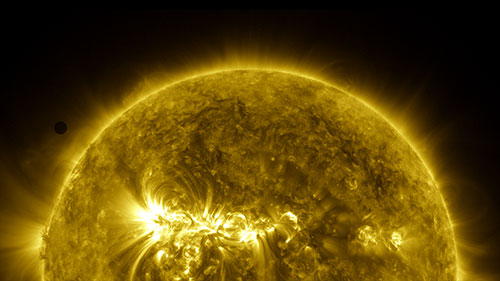
Venus approaches an active Sun. NASA / SDO |
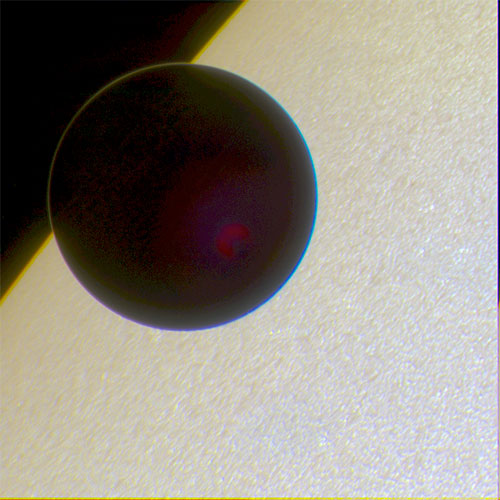
Hinode captures the aureole, the thin ring of sunlight transmitted through the Venusian atmosphere. Hinode |
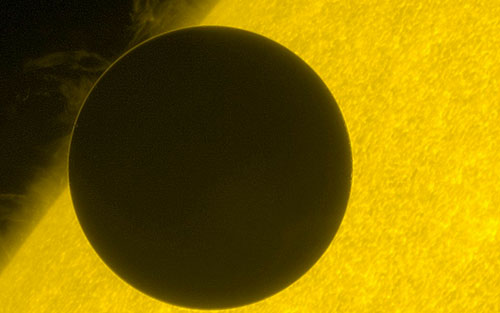
Hinode |
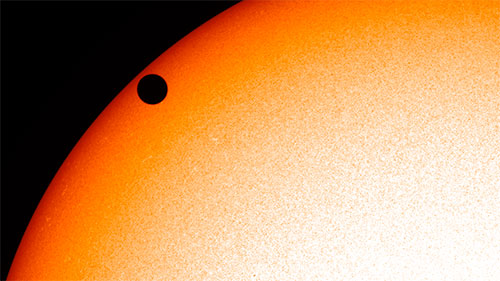
The Helioseismic and Magnetic Imager observes the full solar disk at a wavelength of 617.3 nanometers, a wavelength that gives information about the magnetic field at the surface of the Sun. NASA / SDO |
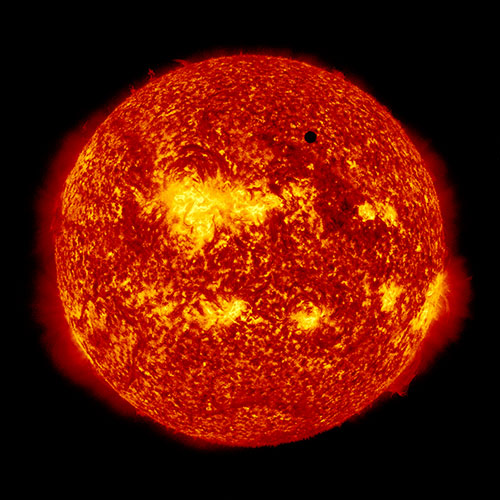
SDO / NASA |
 0
0

Comments
You must be logged in to post a comment.